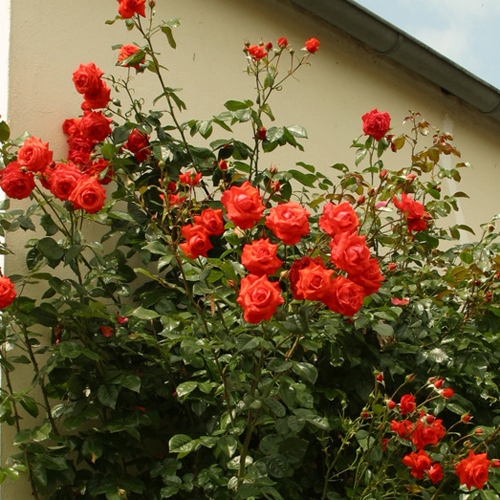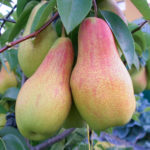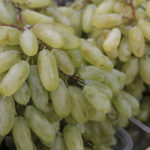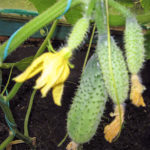Rose Salita
Many flower growers are attracted by climbing varieties of roses. This is not surprising, because with the help of such plants you can arrange a luxurious flower garden or a lovely gazebo on your site. If you are of the same opinion, take a closer look at the Salita variety.

History of creation and description of the variety
This queen of flowers was bred in Germany by the old company Kordes in 1987. The second name of our heroine is KORmorlet. Distinctive features of the Salita variety are:
- large sizes (the bush reaches 2.5-3 meters in height, 150 cm in width);
- long strong shoots;
- large dark green leaves with a glossy sheen;
- low growth rate, depending on the type of climate (the colder it is, the lower the value of this parameter).
Young stems are purple in color. They develop bright, rich orange-scarlet color, neat double flowers. When you look at them, there is a clear association with a fiery flame. The flower does not exceed 9 cm in diameter, it can be single or in a brush. Each shoot bears up to three elegant flowers, resembling those of the hybrid tea varieties. This rose has a very faint scent.

The spreading bush blooms continuously throughout the growing season. Salita is a fairly winter-hardy variety that can withstand frosts from -26 ° C. The plant's resistance to diseases is average, but good care solves this problem. In addition, the flowers are not afraid of precipitation.
Growing features
Salita thrives on an area with sufficient sunlight. The rose should be protected from drafts, as well as from stagnation in the soil of melt, rainwater.
For planting shrubs, carried out in spring, use loose, if possible light soil with a high degree of fertility. The recommended depth of the planting hole is 25-30 cm. Lay a layer of drainage material at its bottom, then add a mixture of peat and compost. Observe the distance between the planted plants at 50 cm. If you are dealing with sufficiently large and tall specimens, increase this parameter by 2 times.

Salita should be watered 1-3 times a week. Up to 25 liters of soft water is poured under each bush. When the culture reaches the age of two, they begin to feed it regularly. In spring, for this purpose, concentrates rich in nitrogen with small amounts of potassium and phosphorus are used. In autumn, pure phosphorus-potassium fertilizers are applied to the soil under the plant. At the budding stage, the rose is sprayed with micronutrient fertilizer containing boron.
Salita needs pruning, but this should be done very carefully. In the process, you must preserve the first-order basal shoots. Perform a rejuvenating pruning every few years.
For normal growth and development of Salita, it is required to periodically loosen the soil under the flower and mulch the soil. So you reduce the risk of developing various diseases on the plant, especially powdery mildew. To reduce the likelihood of black spot occurrence, the culture should be sprayed with a fungicide solution 2-3 times per season. This treatment is also necessary before covering the bush for the winter. The shoots are bent to the ground and covered with sawdust, after spilling the rose.
Use cases
Salita will decorate the walls of the house, garden arch, fence and pergola. It can be put on the gazebo, which you will never want to leave. Salita just looks great on the pillar due to its characteristic of producing bright flowers at different levels of the bush. You can plant a plant in the middle of the lawn all alone. However, ground cover annuals with white flowers will make him a good company: verbena, phlox, ageratums, alissums, etc.When growing a variety with a scrub, plant conifers next to it.








